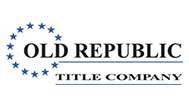Among the multitude of documents and legal instruments that go into any real estate transaction, the Final Closing Disclosure Form is one of the most important. Although only five pages, it provides key details about your mortgage loan shortly before the loan is set to close. That is why it is important to know what this form is all about and what you should look out for when reviewing it with your real estate attorney. Let us start with some common questions you may already be asking yourself.
What is a Final Closing Disclosure Form?
Often known simply as a CD, a Final Closing Disclosure Form provides all the final details about your mortgage loan. This includes the terms and conditions of the loan, the projected monthly payments, and “closing costs” such as loan fees and other expenditures required to get the loan.
Lenders are required to provide this document at least three business days before the scheduled closing date. This gives you time to compare the final terms and costs on the CD to what was provided in the Loan Estimate previously issued to you by the lender. It is also an opportunity to contact the lender with any questions or concerns before you close.
Are the Costs Truly Final?
There are three categories of closing costs: those that can be changed or increased by any amount; those that can be increased only up to 10 percent; and costs that cannot be increased at all. While federal regulations prohibit lenders from deliberately underestimating the costs on your Loan Estimate, lenders can change certain costs depending on the circumstances, including:
- If you decide to get a different type of loan or change the amount of your down payment.
- If the appraisal on the subject property was higher or lower than expected.
- If you took out a new loan or missed a payment on an existing loan that altered your credit.
- If your lender was unable to document other income, such as overtime or bonus compensation.
The above-listed circumstances are known as “change in circumstances,” and the lender will often provide a “revised Loan Estimate” accordingly.
Costs that Can Increase by Any Amount
The following costs on the Final Closing Disclosure Form can increase by any amount, at any time, because they are not controlled by the lender:
- Prepaid interest, property insurance premiums, or initial escrow account deposits (such as for insurance or property taxes).
- Fees for services required by the lender, such as a title search or lender title insurance policy, if the provider is not among the lender’s list of providers.
- Fees for third-party services not required by the lender.
Additionally, if the interest rate is not locked, it can change at any time before closing. Lenders may agree to lock-in your interest rate if you close by a set deadline, but that means the locked interest rate can still change if you fail to close on the transaction by the agreed upon time. Moreover, if you make any changes to your application information, the interest rate may change accordingly. Usually, the top of the first page of your Loan Estimate will indicate whether the interest rate is locked and the deadline to close.
Costs that Can Increase by up to 10 Percent
If there is a “change in circumstances” provision in the loan estimate, the following costs can change by any amount. However, if there is no such provision, then these costs cannot increase by more than 10 percent:
- Recording fees, such as for the deed.
- Fees for required services provided by a third-party service provider on the lender’s list of approved providers (note that if the provider is an affiliate of the lender, the cost cannot change at all).
Costs that Cannot Increase at All
Barring a “change in circumstances” provision, these costs cannot change at all:
- Service fees paid to the lender, mortgage broker, or an affiliate of either the lender or mortgage broker.
- Fees for required services that the lender did not allow you acquire separately, if the provider is not affiliated with the lender or mortgage broker.
- Transfer taxes.
Making Sense of the Final Closing Disclosure Form
As you can see, despite its name, the Final Closing Disclosure Form may not necessarily be the last word on the costs of your mortgage. While only five pages, there are many complex factors that determine what your final costs will be—hence the importance of having a qualified legal expert by your side that can help you understand these costs and address any changes.
Marina Title has helped borrowers with various loan types figure out the complexities of their loan and how to reduce their costs where possible. From making sure your documents are in order, to providing plainspoken and trustworthy explanations of the costs or terms, we will work hard to protect your interests. To learn more, call (855) 513-5880 or email us at info@marinatitle.com.















